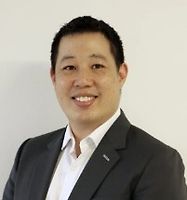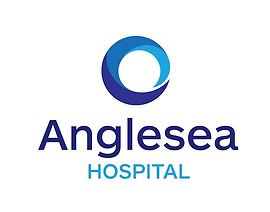Waikato > Private Hospitals & Specialists >
Anglesea Hospital - Plastic Surgery
Private Surgical Service, Plastic Surgery
Description
Anglesea Hospital is a state of the art hospital and day stay facility located in the heart of Hamilton.
- Three state of the art theatres designed and built to international standards which have the latest digital equipment, enabling surgeons better visualisation during complex minimally invasive surgical procedures.
- 3D imaging solution which provides improved speed, accuracy and precision for surgical procedures.
- Innovative designs in movable equipment eliminating permanent fixtures and lessening the risk of infection during procedures.
- Highly experienced registered nursing staff committed to providing patients with the very best in preoperative, intraoperative and postoperative care
- Fully equipped Central Sterile Supply Department (CSSD) staffed by fully qualified CSSD Technicians, providing sterile equipment for all procedures.
- Ongoing monitoring by an Infection Control Nurse to ensure excellent Infection Control management
- Training room for live streaming of laparoscopic surgery for specialists from all over New Zealand.
Consultants
-

Mr Simon Chong
Plastic Surgeon
-

Mr Simon Nicholson
Plastic Surgeon
Procedures / Treatments
Raised naevi may be removed surgically by cutting down to the level of the skin but naevi that may have become cancerous will be cut out entirely and stitches will be required.
Raised naevi may be removed surgically by cutting down to the level of the skin but naevi that may have become cancerous will be cut out entirely and stitches will be required.
Surgery to increase breast size involves inserting silicone sacks (implants) filled with silicone gel or salt water (saline) under the chest muscle and skin. The procedure involves making a cut (incision) in the armpit, under the breast or around the areola (the dark area around the nipple) from where the implant is inserted.
Surgery to increase breast size involves inserting silicone sacks (implants) filled with silicone gel or salt water (saline) under the chest muscle and skin. The procedure involves making a cut (incision) in the armpit, under the breast or around the areola (the dark area around the nipple) from where the implant is inserted.
This is an operation that can lift and reshape sagging breasts. The procedure usually involves removing skin from an area below the nipple and reshaping the breast.
This is an operation that can lift and reshape sagging breasts. The procedure usually involves removing skin from an area below the nipple and reshaping the breast.
A silicone sack filled with either silicone gel or saline (salt water) is inserted underneath the chest muscle and skin. Before being inserted, the skin will sometimes need to be stretched to the required breast size. This is done by placing an empty bag where the implant will finally go, and gradually filling it with saline over weeks or months. The bag is then replaced by the implant in another operation.
A silicone sack filled with either silicone gel or saline (salt water) is inserted underneath the chest muscle and skin. Before being inserted, the skin will sometimes need to be stretched to the required breast size. This is done by placing an empty bag where the implant will finally go, and gradually filling it with saline over weeks or months. The bag is then replaced by the implant in another operation.
Surgery to reduce breast size involves making a cut (incision) around the areola (the dark area around the nipple) straight downwards and along the crease beneath the breast. Glandular tissue, fat and skin are removed and the breast reshaped.
Surgery to reduce breast size involves making a cut (incision) around the areola (the dark area around the nipple) straight downwards and along the crease beneath the breast. Glandular tissue, fat and skin are removed and the breast reshaped.
Surgery to relieve carpal tunnel syndrome involves making a cut (incision) from the middle of the palm of your hand to your wrist. Tissue that is pressing on the nerve is then cut to release the pressure.
Surgery to relieve carpal tunnel syndrome involves making a cut (incision) from the middle of the palm of your hand to your wrist. Tissue that is pressing on the nerve is then cut to release the pressure.
Surgery to repair a cleft lip involves making a cut (incision) on both sides of the gap in the lip (cleft). The surgeon then turns the dark-coloured edge of the cleft under and pulls the muscle and skin of the lip together to close the gap. Surgery to repair a cleft palate involves making cuts in the roof of the mouth on each side of the gap. Tissue and muscles are moved towards the centre of the roof of the mouth and joined together, closing the gap.
Surgery to repair a cleft lip involves making a cut (incision) on both sides of the gap in the lip (cleft). The surgeon then turns the dark-coloured edge of the cleft under and pulls the muscle and skin of the lip together to close the gap. Surgery to repair a cleft palate involves making cuts in the roof of the mouth on each side of the gap. Tissue and muscles are moved towards the centre of the roof of the mouth and joined together, closing the gap.
Surgery to repair a cleft lip involves making a cut (incision) on both sides of the gap in the lip (cleft). The surgeon then turns the dark-coloured edge of the cleft under and pulls the muscle and skin of the lip together to close the gap.
Surgery to repair a cleft palate involves making cuts in the roof of the mouth on each side of the gap. Tissue and muscles are moved towards the centre of the roof of the mouth and joined together, closing the gap.
Cuts (incisions) are made behind the ears through which the cartilage in the ear can be reshaped or removed.
Cuts (incisions) are made behind the ears through which the cartilage in the ear can be reshaped or removed.
This procedure typically involves making a small cut (incision) in the fold of the eyelid (for the upper lid) or just below the eyelashes (for the lower lid) and removing any excess skin and/or fat.
This procedure typically involves making a small cut (incision) in the fold of the eyelid (for the upper lid) or just below the eyelashes (for the lower lid) and removing any excess skin and/or fat.
In a typical face lift, cuts (incisions) are made within the hairline in front of and around behind the ears. Tissue lying deep below the skin is repositioned, then the skin replaced and any excess is removed.
In a typical face lift, cuts (incisions) are made within the hairline in front of and around behind the ears. Tissue lying deep below the skin is repositioned, then the skin replaced and any excess is removed.
Implants can be put into your chin, cheeks or jaw to improve the shape and/or size of the bones in these areas. In most cases, small cuts (incisions) are made on the inside of your mouth, through which the implants can be inserted.
Implants can be put into your chin, cheeks or jaw to improve the shape and/or size of the bones in these areas. In most cases, small cuts (incisions) are made on the inside of your mouth, through which the implants can be inserted.
In this procedure, small cuts (incisions) are made on the inside of the lip and the tissue is reshaped.
In this procedure, small cuts (incisions) are made on the inside of the lip and the tissue is reshaped.
This procedure removes unwanted pockets of fat from under your skin in specific parts of the body such as the chin, neck, upper arms, stomach, hips and thighs. A small cut (incision) is made through which a narrow, hollow tube (cannula) is inserted. The tube is moved around to loosen the fat cells, which are then sucked out with a vacuum device.
This procedure removes unwanted pockets of fat from under your skin in specific parts of the body such as the chin, neck, upper arms, stomach, hips and thighs. A small cut (incision) is made through which a narrow, hollow tube (cannula) is inserted. The tube is moved around to loosen the fat cells, which are then sucked out with a vacuum device.
Small cuts (incisions) are made either on the inside or outside (in the creases) of the nose. Excess bone and/or cartilage are removed and the nose reshaped.
Small cuts (incisions) are made either on the inside or outside (in the creases) of the nose. Excess bone and/or cartilage are removed and the nose reshaped.
This usually involves cutting out the old scar, closing the wound with stitches and, in some cases, moving the scar so that it is hidden by natural features of the body. If the scar to be revised is particularly large, it may be necessary to have a skin graft. This involves transferring skin from another, healthy part of the body (donor site) to the injured site (recipient site).
This usually involves cutting out the old scar, closing the wound with stitches and, in some cases, moving the scar so that it is hidden by natural features of the body. If the scar to be revised is particularly large, it may be necessary to have a skin graft. This involves transferring skin from another, healthy part of the body (donor site) to the injured site (recipient site).
Cuts (incisions) are made across the lower stomach and around the tummy button and the muscles underneath are pulled together and stitched. Excess fat is removed. The skin flap is stretched down and the excess skin removed. A new hole is made and the tummy button replaced.
Cuts (incisions) are made across the lower stomach and around the tummy button and the muscles underneath are pulled together and stitched. Excess fat is removed. The skin flap is stretched down and the excess skin removed. A new hole is made and the tummy button replaced.
The following different types of surgery are available if varicose veins require treatment: Sclerotherapy – a tiny needle is used to inject a chemical solution into the vein that causes the vein to collapse. This approach is recommended for small varicose veins only. Vein stripping – the varicose veins are cut out and the veins that branch off them are tied off. The cuts (incisions) made in the skin are closed with sutures. Phlebectomy – small cuts (incisions) are made in the leg and the varicose veins are pulled out with a tiny hook-like instrument. The cuts are closed with tape rather than sutures and, once healed, are almost invisible.
The following different types of surgery are available if varicose veins require treatment: Sclerotherapy – a tiny needle is used to inject a chemical solution into the vein that causes the vein to collapse. This approach is recommended for small varicose veins only. Vein stripping – the varicose veins are cut out and the veins that branch off them are tied off. The cuts (incisions) made in the skin are closed with sutures. Phlebectomy – small cuts (incisions) are made in the leg and the varicose veins are pulled out with a tiny hook-like instrument. The cuts are closed with tape rather than sutures and, once healed, are almost invisible.
The following different types of surgery are available if varicose veins require treatment:
- Sclerotherapy – a tiny needle is used to inject a chemical solution into the vein that causes the vein to collapse. This approach is recommended for small varicose veins only.
- Vein stripping – the varicose veins are cut out and the veins that branch off them are tied off. The cuts (incisions) made in the skin are closed with sutures.
- Phlebectomy – small cuts (incisions) are made in the leg and the varicose veins are pulled out with a tiny hook-like instrument. The cuts are closed with tape rather than sutures and, once healed, are almost invisible.
Disability Assistance
Wheelchair access
Website
Contact Details
Anglesea Hospital
Waikato
-
Phone
(07) 957 4915
-
Fax
(07) 957 4914
Email
Website
19 Knox Street
Hamilton Central
Hamilton
Waikato 3204
Street Address
19 Knox Street
Hamilton Central
Hamilton
Waikato 3204
Postal Address
PO Box 9077
Hamilton
Was this page helpful?
This page was last updated at 10:51AM on July 24, 2024. This information is reviewed and edited by Anglesea Hospital - Plastic Surgery.

